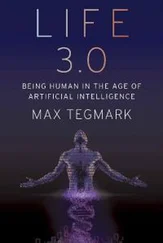3. Conclusion (receiver): When the messages which the receiver accepts are congruent, he has no difficulty in understanding the meaning of what the communicator intends. When the communicator presents incongruent messages, whether or not the receiver has organized the conflicting messages so that he is aware that they do not fit, he will reach a conclusion that something about the communication didn't work for him. This will either occur in the receiver's awareness, and he then will have the freedom to gracefully present the dissenting conclusions he has reached from the conflicting messages and, possibly, even give the communicator specific feedback (for example, that the communicator's body posture did not fit the tone of voice he used) as he explores the specifics of the incongruity with the communicator. If the receiver has not been aware of the particular conflicting messages (i.e., when he has organized his experience so that he is only aware of the messages which fit together, the conflicting messages having been received and accepted at the unconscious level), he will, typically, reach the conclusion that he is confused. When the receiver is sensitive to his own experience and recognizes his confusion, he is free to comment on it and has the choice of requesting the assistance of the communicator in resolving it. What is particularly important here is that the receiver and the communicator both have the choice of exploring their communication without their self-esteem's being threatened — without the exchange's becoming a survival issue — using the occasion, instead, as an opportunity for growth and change.
4. Generalization (receiver): What distinguishes this step in a feedback communication cycle from the way generalizations are made by the receiver in a calibrated communication cycle is that, when the incongruent messages are received by the receiver and they trigger some experience from the past, he is sensitive enough to his ongoing experience to immediately become aware that he is only partially present in the interaction — part of his attention has shifted to some other time, place and experience. This allows him the choice of continuing with the communication, refocusing his attention with the understanding that there is something unfinished connected with the particular pattern of incongruency presented by the communicator. He understands that some of his experience at that point in time is coming from somewhere else. He may, of course, comment to the communicator on what is occurring, and he has the freedom to request feedback to help him resolve the unfinished pattern from the past which is presently distracting him.
One way in which the feedback cycle differs from the calibrated cycle is that, whenever the receiver is confused or aware that a previous occurrence is intruding and distracting him from freshly experiencing the present, he immediately attends to that sensory experience to discover what is happening. By being able to immediately establish sensory contact with his present situation and, especially, with the communicator, he can use his experience of confusion or distraction to learn more about himself and the person with whom he is communicating. This allows him to detect any patterns which are distorting his experience by accepting a part of a message for the entire communication (Complex Equivalence) and patterns of "knowing" the inner experience of the communicator without checking it for accuracy with the communicator (Mind Reading). Thus, the generalizations which the receiver in a feedback cycle makes and uses are flexible guides for understanding which are constantly being up-dated and checked against sensory experience.
5. Response Behavior (receiver): If the communicator began this cycle with an incongruent communication, then either the receiver has detected the conflicting messages in awareness and has begun to explore this with the communicator, using feedback, or he has detected a sense of confusion and has begun to explore this. If neither of these have occurred, then, typically, the receiver's response behavior will reflect the incongruency — that is, the receiver himself will present the original communicator with an incongruent set of messages. If both the original communicator and the original receiver have the freedom to comment on and explore any confusion or incongruity without the interchange's becoming an issue of survival, then, before long, one or the other of the people involved, as they shift from communicator to receiver, will detect miscommunication patterns and begin to explore this opportunity to learn.
One way to clarify the usefulness of these two specific kinds of communication cycles (calibrated and feedback) is to understand that the therapist's task is to assist the family members in changing their patterns of communication from calibrated loops to feedback cycles. (See page 118.) Another way to use this model is for the therapist to check his own communication patterns with the family members to prevent himself from being incorporated into their destructive patterns of communication. These specific choices of effective intervention by the therapist are the focus of the remainder of Part II. We offer the five-step communication model for your use in understanding the way in which all of the specific intervention techniques fit together.
We move on now to present in more detail the intervention choices available to therapists, based on this communication model.
The most general level of patterning in our model for family therapy has three phases:
I. Gathering Information
II. Transforming the System
III. Consolidating Changes
In the first phase of family therapy, the therapist works with family members to gather information which will help him to create an initial experience with them (Phase II) which can then serve as a model for them in their future growth and change. The question


which the therapist must face is: Which introductory experience will best serve as this model for the family? One of the major purposes of the therapist's actions during this phase is to determine exactly which experience he will, in fact, initially use as a model. We call this set of actions by the therapist determining the desired state. Essentially, the desired state is a description of one condition of living for the family which would satisfy the desires of the individual family members. In other words, one of the ways by which the therapist organizes his activities during this phase is to seek out the information which identifies for him the way the family members themselves want the family experience of living to be.
In the process of determining this desired state for the family, the therapist is listening and watching, experiencing the family fully as they begin to make known their hopes and fears about themselves as individuals and about the family as a whole. This identifies the second category of information that the therapist is seeking: information regarding the present state of the family. In order to act effectively in Phase II, the therapist needs to know not only what the family wants — which we will call the desired state — but also what resources the family has presently developed.
We emphasize that what we are calling the present state and the desired state are nominalizations. These nominalizations are useful only to the extent that the therapist and the family members understand that the present state is actually not a state but a process — the ongoing interaction and communication. Furthermore, the desired state — the experience which the family members and the therapist will create in Phase II — is actually the first step in the process of opening up the family system to the possibilities of growth and change.
Читать дальше













